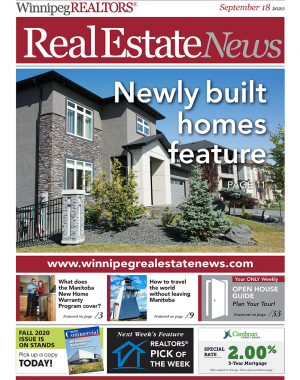Louis H. Sullivan referred to the tall office buildings of the late 19th and early 20th centuries when he suggested form should follow function. Of course, aesthetics continually change, as do processes surrounding our lives.
Homes once had back stairs for household staff, rooms were closed and with low ceilings to preserve fireplace warmth, and dark colour palettes hid the inevitable accumulation of soot.
We’re used to changes emerging because of technology, such as the move to forced air furnaces, but today, we’re also faced with the biological influence of the COVID-19 pandemic. The functions of life change to enhance social isolation to minimize the effects of coronavirus transmission.
As an historical event, the pandemic of 2020 isn’t unusual. What’s remarkable is it’s the first time society is able to mitigate the impact of a deadly virus, with quarantine and social isolation. With this new and widespread awareness of the damage a pandemic can bring, it’s natural to look forward to ways we can incorporate the lessons learned from COVID-19.
The basic unit of isolation through the second quarter of 2020 is the household. Is the pandemic enough to influence home design? The Hearst Publications home lifestyle magazine Veranda thinks so, predicting the end of open-concept design as a result of COVID-19. Their article suggests forced isolation into the home means more internal subdivision to assure greater privacy as tasks previously done in offices or classrooms come into the home.
Entrenching the home office
The first challenge to open concept design might arise from square meters lost to “new normal” work requirements.
The home office has been largely improvised out of bedrooms, dens, and unfinished basements. Work from home arrangements are suddenly pushed to the forefront as more businesses realize, through COVID-19 isolation, they can manage remote workforces. The family needing three bedrooms and a home office is suddenly not as unusual. The savvy builder may begin to work this into standard floor plans.
The new media room?
Zoom and other video messaging apps bridge some of the distance that isolation adds. Video calls, teleconferencing, and personal communications have, in four short months, become part of normal life in Canada.
Social media is filled with humorous videos of children and pets bringing comic relief to business calls. Telemedicine appointments may demand a new level of privacy. Is the answer a dedicated communications room, a virtual video telephone booth within the home?
Certainly, the demand for improved technology integration will continue to climb. Wi-Fi, bluetooth, and smart home devices, already soaring in popularity, offer convenience and flexibility within a now-busier household.
If the communications room concept takes hold, look for it to be the hub of the home’s tech, a logical location for modems, routers, and central Wi-Fi broadcasting. Room-to-room integration could also start from the communications room, potentially supporting every room as its own media room.
Sustainability trends
There’s plenty that could change with existing homes too, in the post-COVID-19 re-focus of the household. Expect an uptick in projects to expand the privacy and utility of outdoor spaces. Fences and plantings for privacy and deck expansions are two obvious enhancements, and there’s evidence that garden space — indoors and out — is finding new enthusiasts.
Sun porches, gazebos, and even tiny houses may also add up to new ways to make the most out of your existing property and living spaces. Even if fundamental change for your household is further into the future, time spent in isolation may have you craving a fresher look for your current space. Consider these eco-friendly approaches to your improvement projects.
It’s hard to see exactly what changes COVID-19 will leave in its wake. Some may be temporary, others more enduring. Form will, however, follow the new functions required of the post-virus household, whatever those turn out to be.
— Realtor.ca



